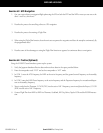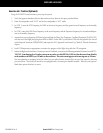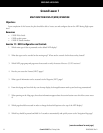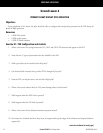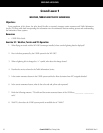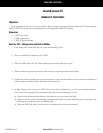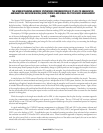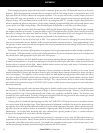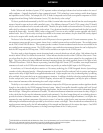
Garmin G1000 Pilot’s Training Guide
190-00368-00 Rev. D
23
APPENDIX
Traffic Collision and Avoidance Systems (TCAS) represent another technological advance that has been made in the area of
traffic avoidance. Originally developed for large commercial aircraft, TCAS technology is now starting to trickle down features
and capabilities to the GA fleet. For example, the GTX 33 Mode-S transponder can be used as an optional component in G1000-
equipped aircraft and brings Traffic Information Service (TIS) data directly to the cockpit.
3
TIS data is provided and transmitted by the FAA over Mode-S terminal radar sites and is derived from the actual transponder
returns of aircraft as seen on the air traffic controller’s scope. A key difference between TIS and a TCAS system is that TIS should
only be used as an additional tool to see and avoid traffic. Therefore, the pilot should not become reliant on TIS and try to avoid
traffic solely by reference to the traffic display in the cockpit. First, deviations should not be performed until the pilot has visually
acquired the threat traffic. Secondly, Mode-S radar coverage and TIS service are only available in areas equipped with Mode-S
terminal radar. Since TIS service may not always be available in the enroute environment, the pilot should not entirely depend
on this tool to acquire traffic visually and should always scan for traffic.
The last tool to be discussed given its benefit to the ADM process is the new generation of GA terrain awareness systems. Ter-
rain awareness systems are split into two generic classes, that is, certified systems and non-certified systems. The certified systems
are the TAWS-A and TAWS-B devices. These systems provide a number of terrain avoidance features that are not available in the
non-certified terrain awareness systems. The G1000 includes a non-certified terrain awareness feature that can be displayed on
both the MFD map and the PFD map inset. TAWS-B will be available as an option for the G1000 system.
The colors used to depict dangerous terrain elevations based on aircraft altitude are red and yellow. Red indicates that the
aircraft is within 100 feet of or below the terrain level. Yellow indicates that the aircraft is within 1,000 feet of the terrain. These
two colors allow the pilot to look at the planned route and then decide which altitude seems optimal for the completion of the
flight. This color scheme also brings additional situational awareness during the critical approach phases of the flight in both
VFR and IFR conditions. With the interest in preventing Controlled Flight Into Terrain (CFIT) accidents, even simple situational
awareness tools such as the G1000 terrain awareness feature can provide yet another helpful input to the ADM process.
In conclusion, as GA aircraft and pilots transition to 21st-century technology, the G1000 Integrated Avionics System brings
a number of safety enhancing benefits. Although automation in the cockpit should be embraced, both its positive and negative
impacts on the safety of flight should be recognized and understood. Proper autopilot use is key to enhancing safety by reducing
pilot workload - this is particularly true in certain emergency situations. In addition, the ability to develop a methodical approach
to other cockpit tasks, even as simple as COM/NAV frequency selection and GPS management, can help the pilot to maintain
better situational awareness while minimizing the overall cockpit workload.
The ability to view weather, traffic and terrain information to improve the ADM process represents another significant benefit
brought to the cockpit by the G1000 Integrated Avionics System. Indeed, from satellite downlink weather with both Nexrad
radar images and textual weather to real-time lightning detection data, the pilot now has access to a wealth of information directly
from the cockpit. Although the combination of weather, TIS and terrain awareness information can increase the safety of flight, it
is also critical that the pilot use this information properly and consistently. Too often, human beings rely on technology alone to
provide the solution to hazardous situations. However, in the dynamic, three-dimensional flight environment, it is the pilot who
represents the most significant component of the avionics system. It is from the cockpit that the most important calculations are
made using the information and inputs provided by the avionics to ensure a safe flight. These calculations are enhanced both by
regular recurrent training and by the full understanding of the strengths and limitations of the various data inputs. Good ADM
and SRM practices are of critical importance to the long-term improvement of the GA safety record.
1
G1000 GDL-69/69A uses XM Satellite Radio with WxWorx data. Please, refer to http://www.wxworx.com/ for more information on available weather data products.
2
Please, refer to the appropriate manufacturer documentation concerning the complete operation of lightning detection equipment.
3
For more information on the TIS system, please refer to: http://www.tc.faa.gov/act310/projects/modes/tis.htm



